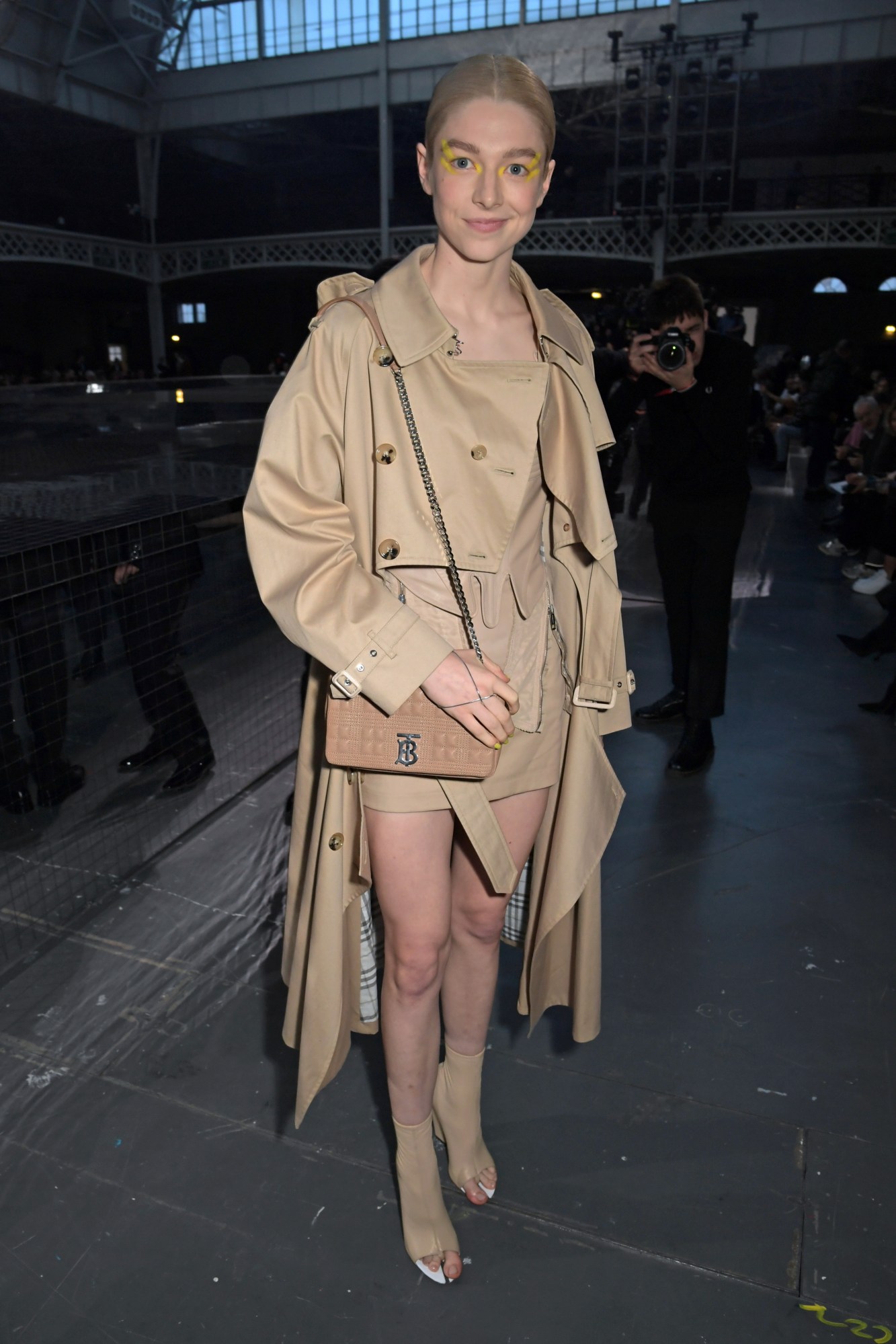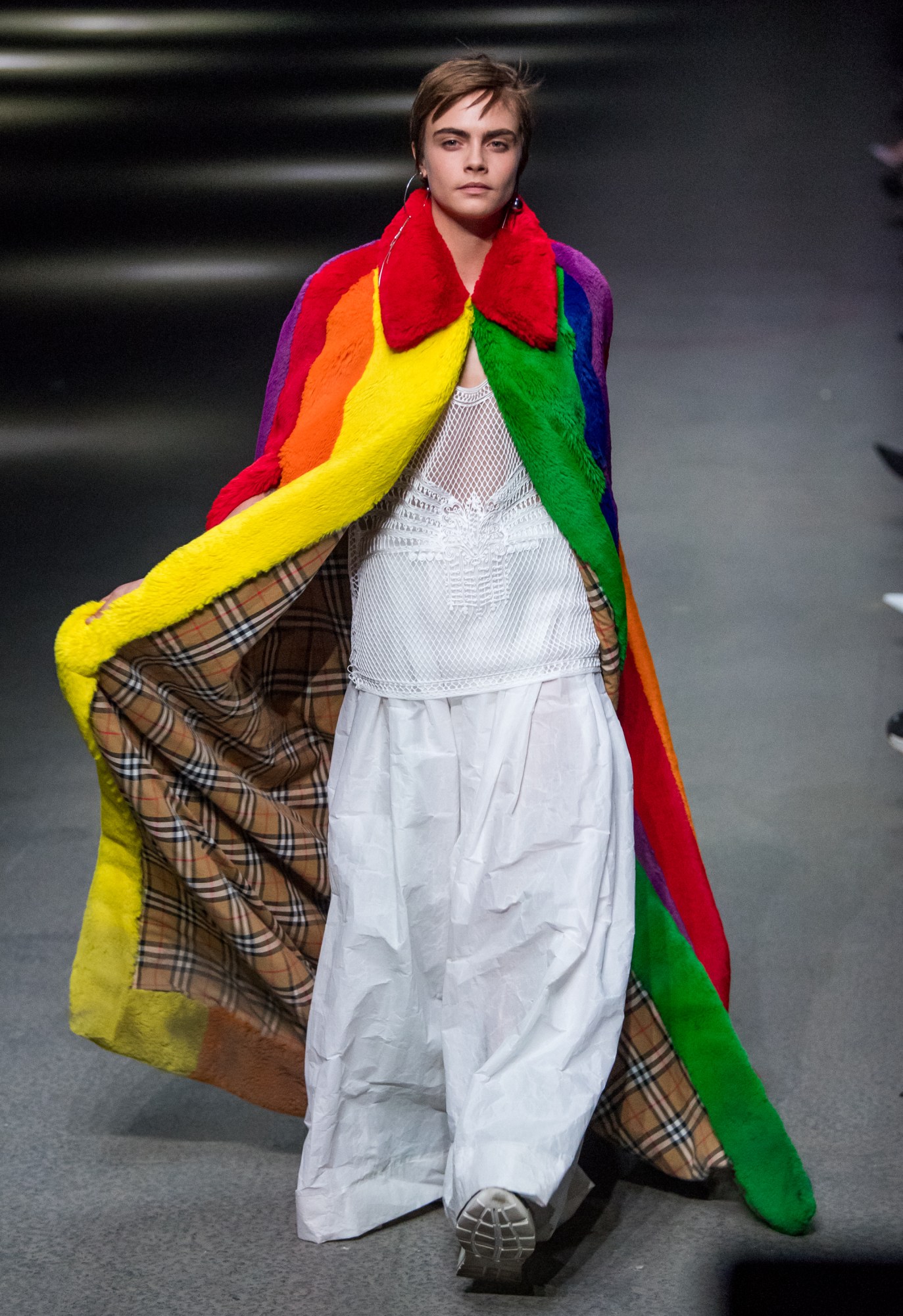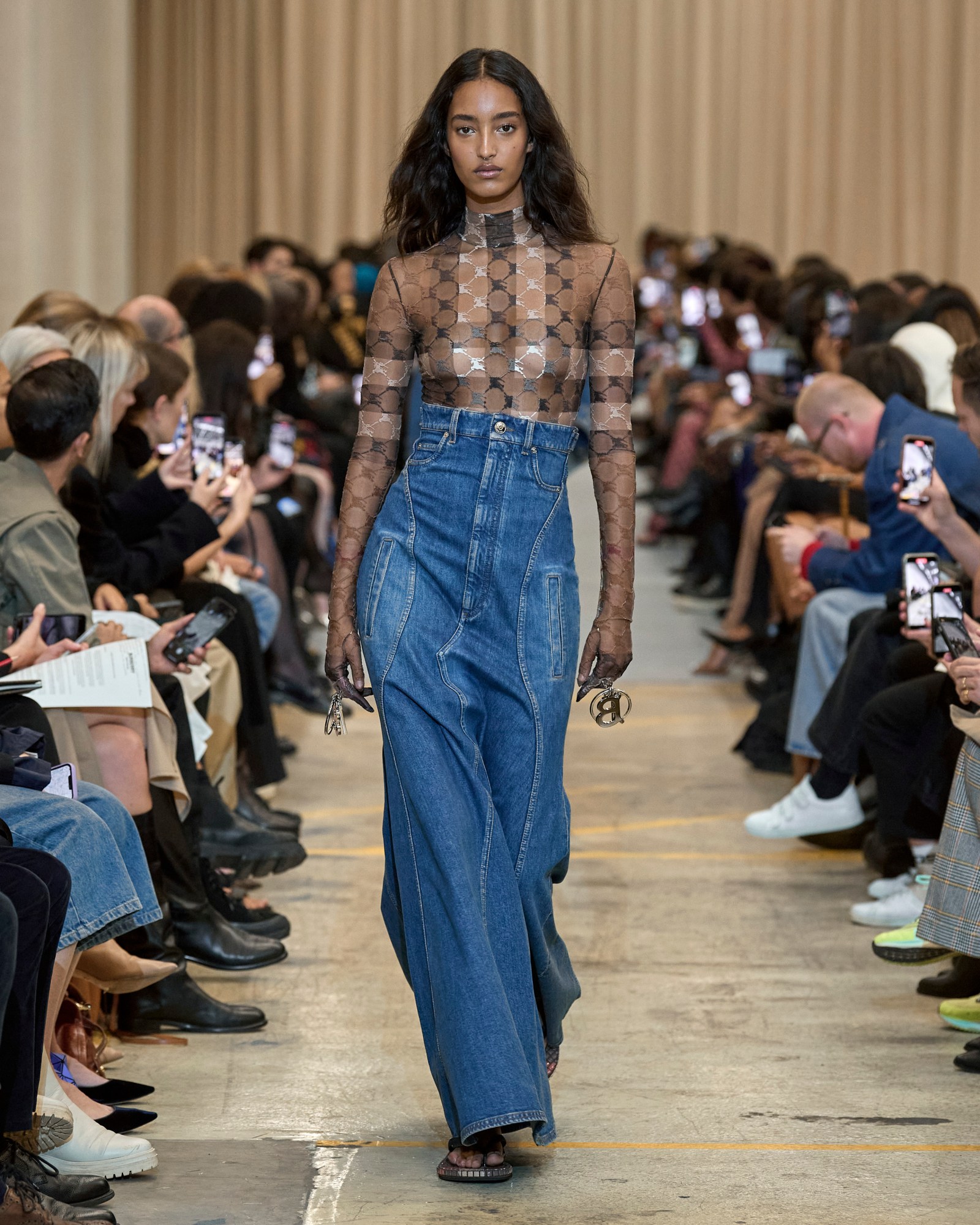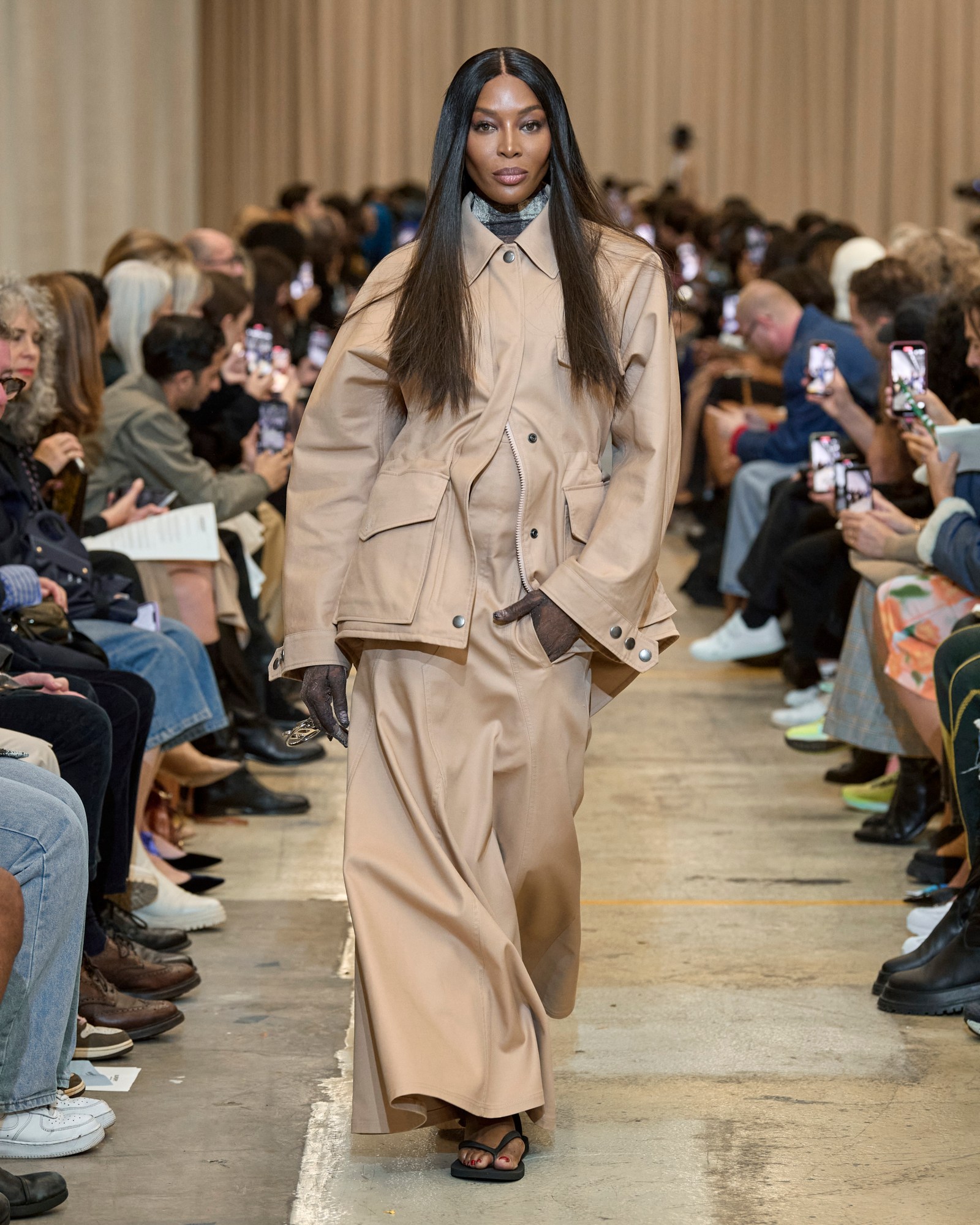Up there with pubs, Sunday roasts and queuing, Burberry has been a staple of British culture from day dot. Along the way, it’s evolved from a rural upstart in sleepy Basingstoke to a global powerhouse, becoming a conduit for discourse around British identity and class structures, all while remaining one of the most universal luxury brands.
Defined by its British artisans, wartime contributions and, of course, the iconic check, the brand remit encompasses countrycore dressing, office formals, high fashion and streetwear, irreverent to hi-low distinctions. Indeed, you’re just as likely to spot its tartan-collared trench coats along football terraces as you are in wardrobes in manor houses. In this way, the label acts like a mirror to our history, telling a tale of industrial craft, subcultural creativity, and a distinctly British resilience in the face of tricky times and shit weather.

Laying claim to two Royal Warrants (one for waterproofing; the other for outfitting), Burberry holds a special place in the heart of its home state, using this as a USP to attract international customers after an authentic piece of Britishness. Whether that looks like a happy-go-lucky Kate Moss, a dapper Eddie Redmayne or Headie One, the brand’s many faces have helped define the image of British culture on a global stage.
Granted, it’s a positively scattered picture, but it’s all the better for it. Over the years, Burberry’s sensitivity to the zeitgeist – fused with its confidence in its original codes – has ensured its relevance. And now, a new era dawns for the house, with the debut of Daniel Lee’s first collection; one that will no doubt riff on the brand’s nuanced relationship to British heritage. But what can we expect? “As a British designer from the north of England, where much of Burberry’s production was done, I imagine he will feel a personal connection to Burberry,” says Sarah Gresty, his old tutor at Central Saint Martins. Otherwise, she has “no idea”.
Until then, we look back on Burberry’s distinctly British oeuvre, spanning the heyday of founder Thomas Burberry to Riccardo Tisci’s logomania.

The Trench
Few garments are as timeless as the Burberry trench, which, since its official inception in 1914, has remained the brand’s bread and butter. Churning out thousands every week, artisans in Castleford Mill, Yorkshire, spend some four hours on each individual coat. Despite its ubiquity and inevitable replication among high streets and counterfeit dealers, it’s still deemed a symbol of status and success. To this point, Fleabag’s sister, Claire, once exclaimed: “I have two degrees, a husband, and a Burberry coat.”
Haughtiness aside, Burberry’s authority for true British fare comes from a nobler narrative, the trench coat originating as part of military uniform. Thomas Burberry is cited as the designer of the first trench coat, issued to British troops during the First World War. Made from his signature material, gabardine – notable for its ventilation, comfort and waterproofing – the design featured D-rings along the belt to carry grenades and epaulettes for soldier’s tools – a far cry from the glitz of today’s Burberry.
Of course, the trench coat has lived many lives beyond the throes of war, spanning contemporary hacks from the likes of Comme Des Garçons, which spliced the design with off-kilter hems and puffball skirting in 2017, and Supreme, whose rework lightly tinkered the formula with a baby pink makeover and a reissue of the original ‘Equestrian Knight’ logo – a motif that lined the collars when Burberry went by its original name: Burberrys.

The Check
Graphically speaking, Burberry’s check (or “Nova check” in pop-cultural folklore) is central to the house’s story, inaugurated as an outerwear liner during the twenties and gradually introduced into accessories and ready-to-wear from the late sixties onwards. During this period, high-profile lords and ladies were co-opted as marketing tools in check-heavy campaigns shot during country pursuits by the photographer, Thomas Patrick John Anson, 5th Earl of Lichfield. Titled with a header that read, “The Burberry Look”, they soon cemented Burberry’s association with landed gentry.
Of course, the other side to this story was taking place in the bowels of working-class life, where style-savvy casuals began appropriating the check to their own ends. As Westminster University’s Professor Andrew Groves puts it, this was “the ultimate form of transgressive dress, enabling not only the subversion of the brand, but also the dominant culture that it purported to represent.” For Andrew, the resulting contradiction became part and parcel of the brand, central to its success this side of the millennium. “In essence, their core product is Britishness, and everything else is merely a manifestation of that,” he adds. After all, what could be more British than the class system?
SUBSCRIBE TO I-D NEWSFLASH. A WEEKLY NEWSLETTER DELIVERED TO YOUR INBOX ON FRIDAYS.
Burberry’s scrapes with class lines is in many ways one of its greatest assets. Despite the foam-mouthed tabloids attacking new-money celebrities, such as Daniella Westbrook, for wearing full-check looks (iconique, btw) throughout the noughties, the brand was far from concerned. In fact, despite critiques accusing the brand of wheeling back its check in a move away from the ‘chavvy’ associations, the pattern, in fact, stayed front and centre in Burberry’s marketing. The Guardian reported in 2004 that “although the check features on only 8% of Burberry’s products, it is the first thing to greet visitors to the company’s website and adorns the company’s latest fragrance.” Ultimately, the ‘chav’ conversation was singularly British and did not phase its American CEO, Rose Marie Bravo.
International Perceptions
Burberry’s remove from Britain’s class politics is unsurprising given that almost half of its sales in 2004 – when headline ferocity peaked – were coming from Asia and North America. “They like the British lifestyle and what they think it stands for – whether it’s reality or not,” Rose Marie Bravo told the Guardian. Rather than pandering to gripes of the British, then accounting for only 15 percent of sales, Rose Marie instead doubled down on her radical rebrand, putting aspirational figures like Kate Moss on a level playing field with aristocrat Stella Tennant, showcasing two sides of Britain. As Sian Weston, author of The Changing Face of Burberry, explains, there was “Moss for her cool, party-loving persona, and Tennant as the aristo-punk, setting the brand apart from the glossy US supermodels of the time.”
More directly, Burberry’s entrance into China proved especially important in its growth, paving the way for other luxury brands and earning the trust of a new market. “Both Bravo and [her successor] [Angela] Ahrendts stayed there for long periods of time, and were ultimately rewarded for their perceived devotion,” says Sian. “Burberry’s denouement, Burberry Beijing in 2011, was a spectacular piece of immersive theatre using high-tech digital interfaces in what was basically a car park in Beijing.” With holographic snowflakes and rainstorms interacting with real and virtual models, the show closed with Cara Delevingne flying away on a Burberry umbrella à la Mary Poppins as Adele’s Someone Like You closed a best of British medley. Now, that’s how you branch out.

Bailey’s Burberry
Hired in 2001 as design director, Christopher Bailey climbed the ladder until eventually becoming CEO in 2013. As a working-class countryman from Yorkshire, he naturally peppered his collections with ingenious nods to Northern England’s cotton and coal industries of the early 20th century. In practice, this meant tailoring inspired by fellow northerner and artist LS Lowry’s matchstick men.
Elsewhere, references to Britain’s indie scene cropped up in show soundtracks – the leftfield performance of Tom Odell for SS13 being a highlight – and playful quips on our rainy skies. “In 2012, it was the London Olympics, and the marketing challenge was how do we get traction when everyone is in town, without being an official sponsor,” recalls Jodie Blackbrough, then-Burberry’s digital content manager. “Everyone would be looking to the skies to know how the day was going to pan out for their visit to the games, so Burberry launched a series of digital weather billboards.” Talk about checking the weather.
Presciently, Christopher’s optimistic take on Britishness came full circle for his final show, which celebrated the house’s forgotten forays into cheaper, licensed accessories and closed with a rainbow-caped Delevingne, walking to Bronski Beat’s “Smalltown Boy”. The homage to Christopher’s life as working-class gay man liberated through the British fashion house and the countless street tribes it fed during the eighties and nineties was lost on no one.

Tisci’s Turn
Riccardo Tisci’s tenure at Burberry offered a unique insight into the house as seen from a non-Brit. Many touted this as an advantage when he was appointed, and the shows that followed certainly proved them right. Diving in headfirst, Tisci’s first move was to install a new logo at the house, created by hallowed graphic designer, Peter Saville. Given Saville’s esteem in the Manchester music scene – where he worked with Joy Division on album covers and the Hacienda’s iconography – Riccardo’s was a step in the right direction.
Followed up with campaigns by British photographer Nick Knight and stylist Katie England, these moves continued built on Christopher’s plans to democratise the label, splicing traditional British tailoring with streetwear aesthetics, all while opening the flood gates on the once-derided check. His final show, which referenced the levelling effects of a British seaside town, again, presented an optimistic future for Britain, keeping the label’s spirit of luxury intact while also ensuring it was reflective of the UK’s varied population. Here’s to more of that.

